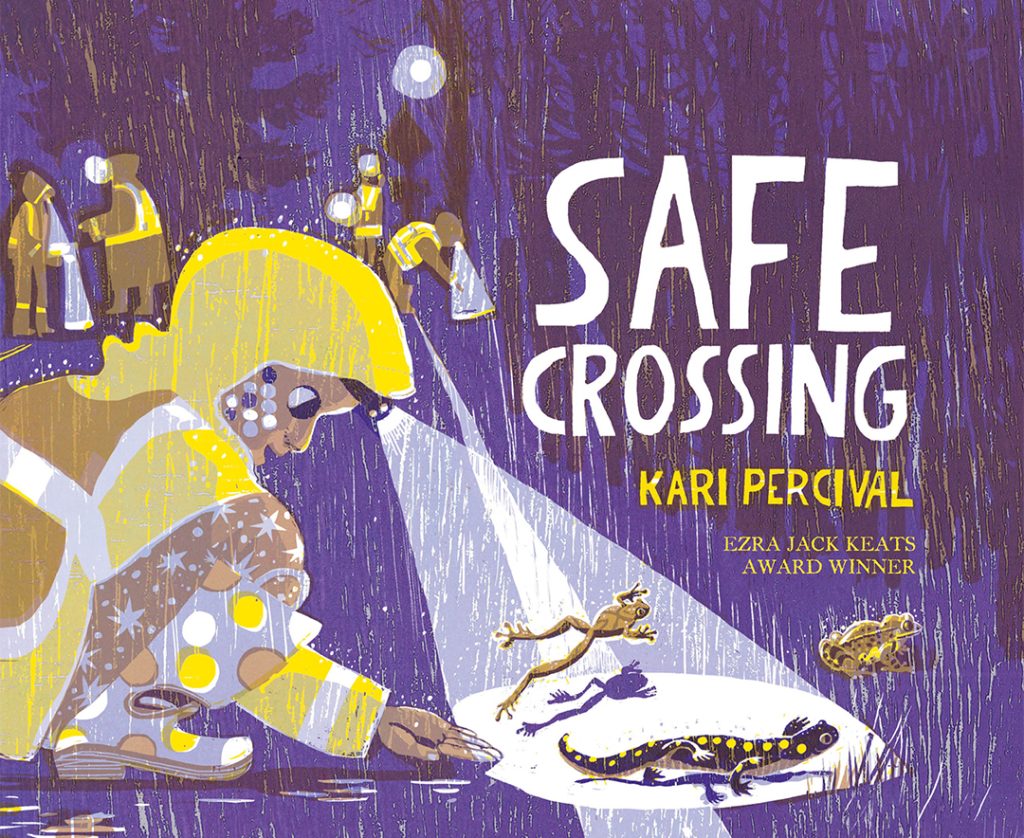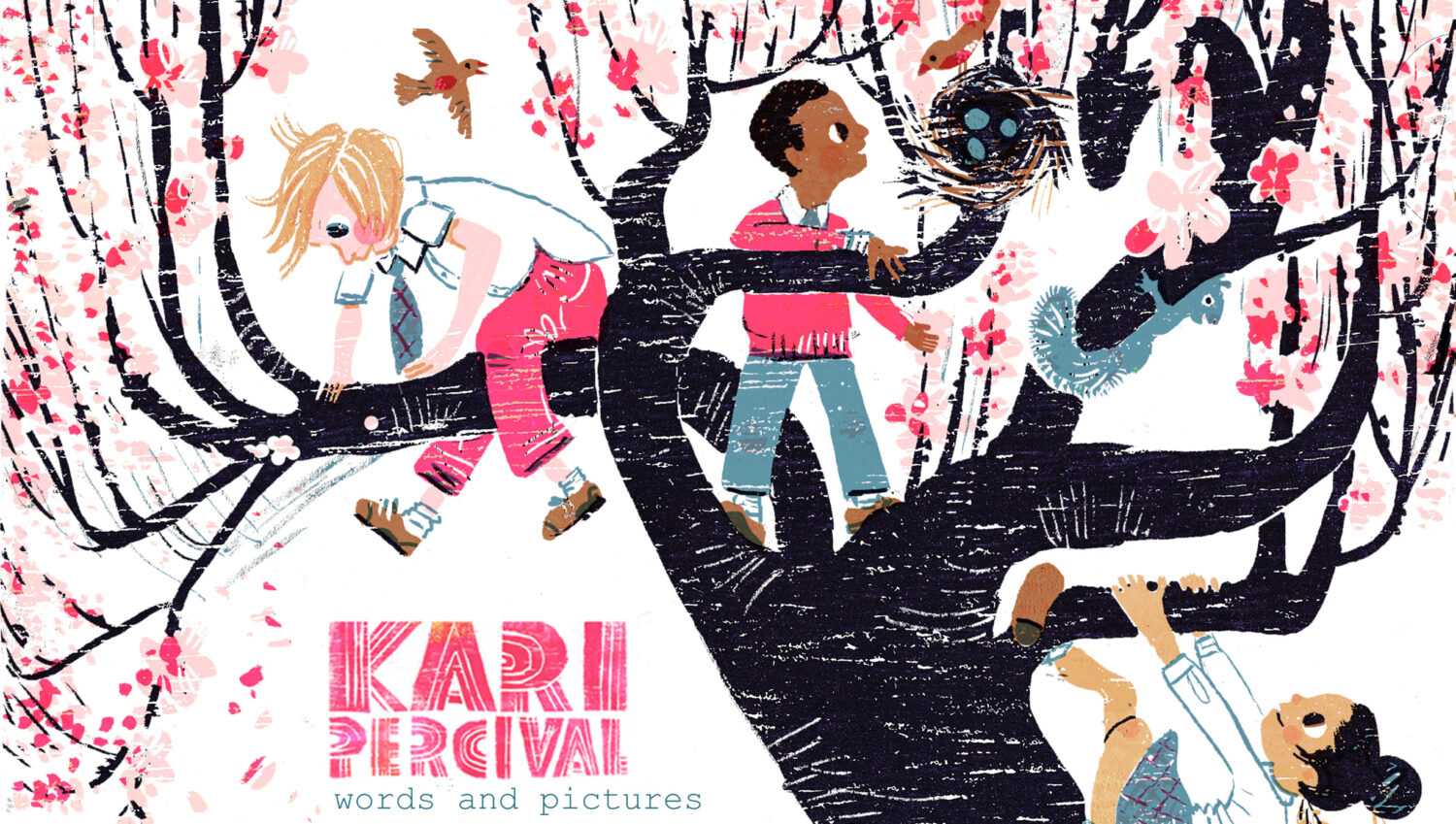My Amphibian Eggs April Odyssey
4/16- Alna ME. When the sun went down I heard the keening of the spring peepers. Nothing makes one feel quite as alive as hearing spring peepers at night. Amphibian siren of spring time.
In the morning, our walk brought us to a marshy wetland, a winding stream, amid cold clear pools. I thought I would look for them, and they were there! Clear jelly clusters of wood frog eggs, bobbing on the surface attached to submerged twigs.
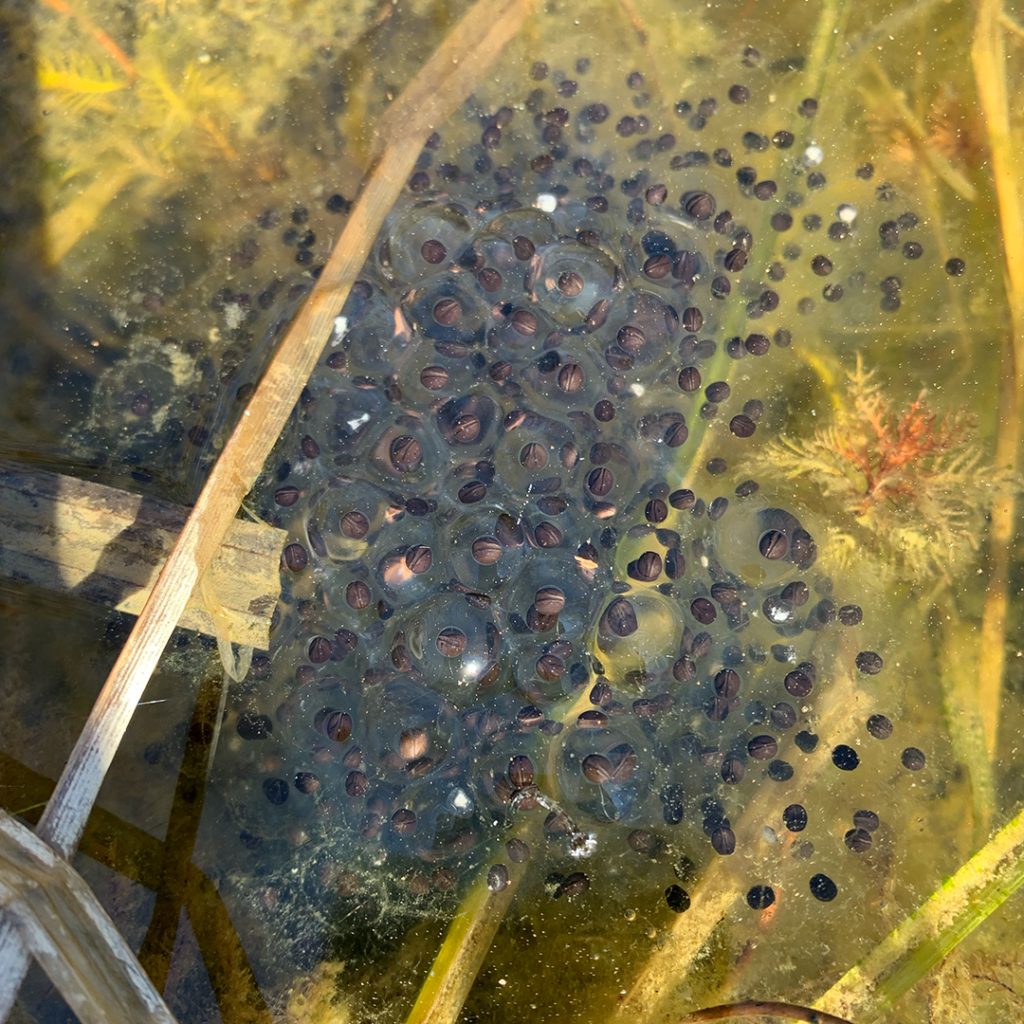
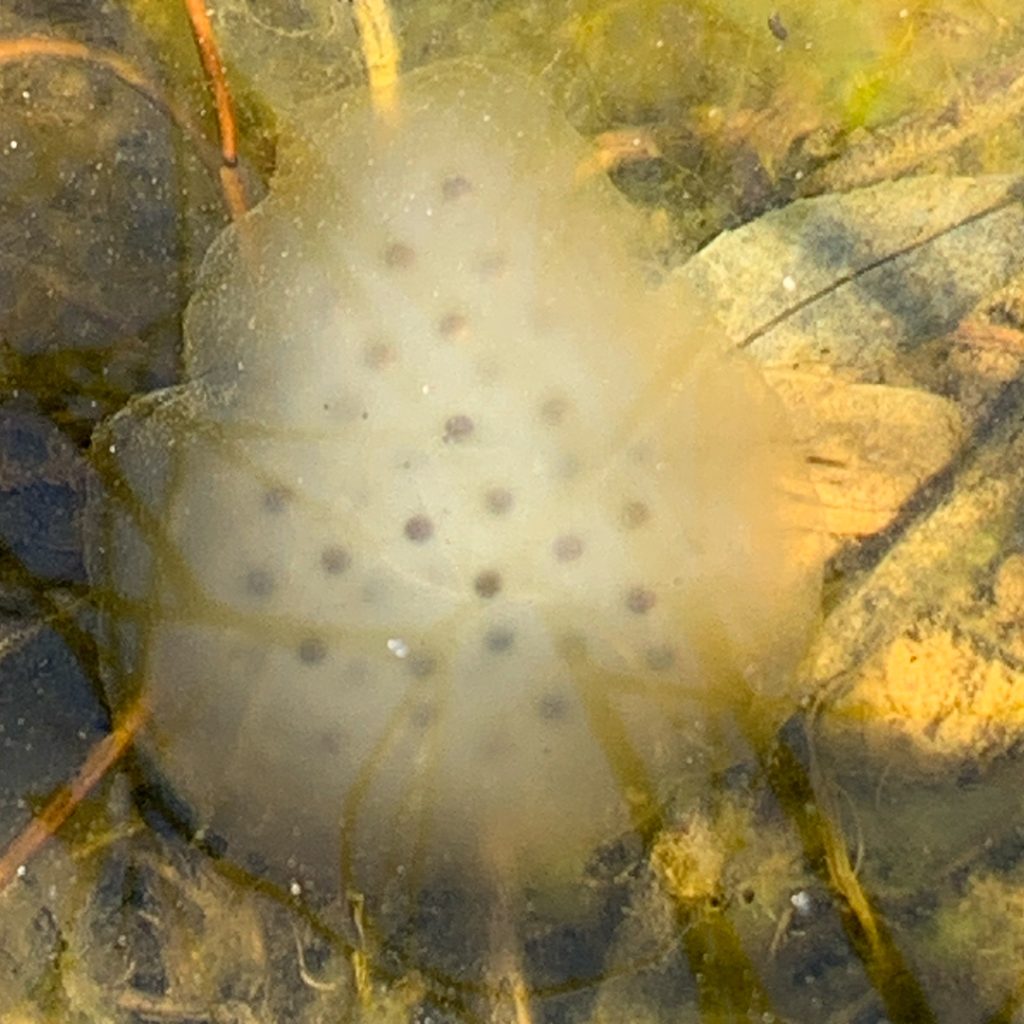
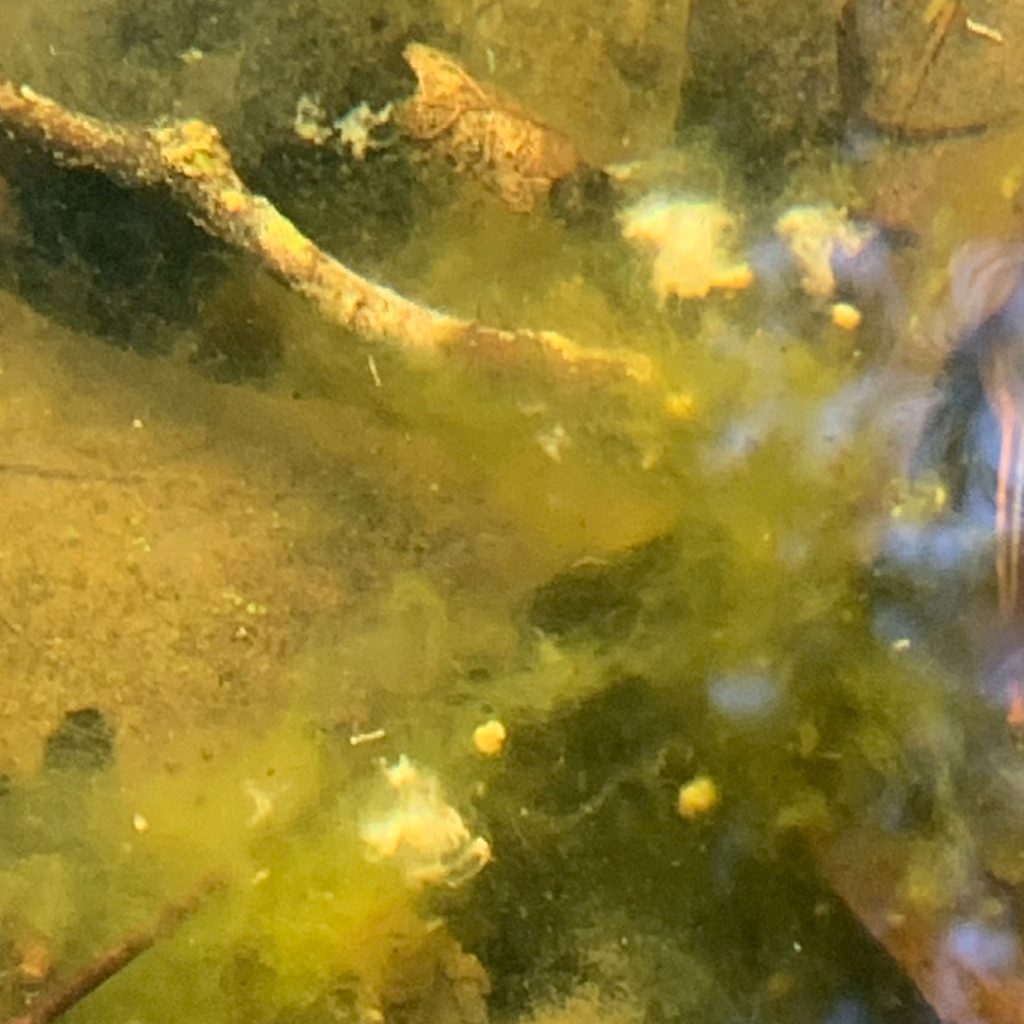
We also spotted salamander clusters, swathed in an outer layer of opaque white gel, deeper and covered with algae, and maybe spotted salamander spermatophores, which look like bread crumbs on the bottom.
And then, as followed the trail deeper in the woods, to a large pool among the hemlocks, we saw a kaleidoscope of salamander eggs. The clusters were oblong, narrow, and numerous. Were they blue spotted or Jefferson salamander eggs? Or spotted salamander eggs? Whatever they were, there were several areas with gobs and gobs of elongated egg clusters wrapped in an extra layer of jelly, some crystal-transparent, some misty-white.
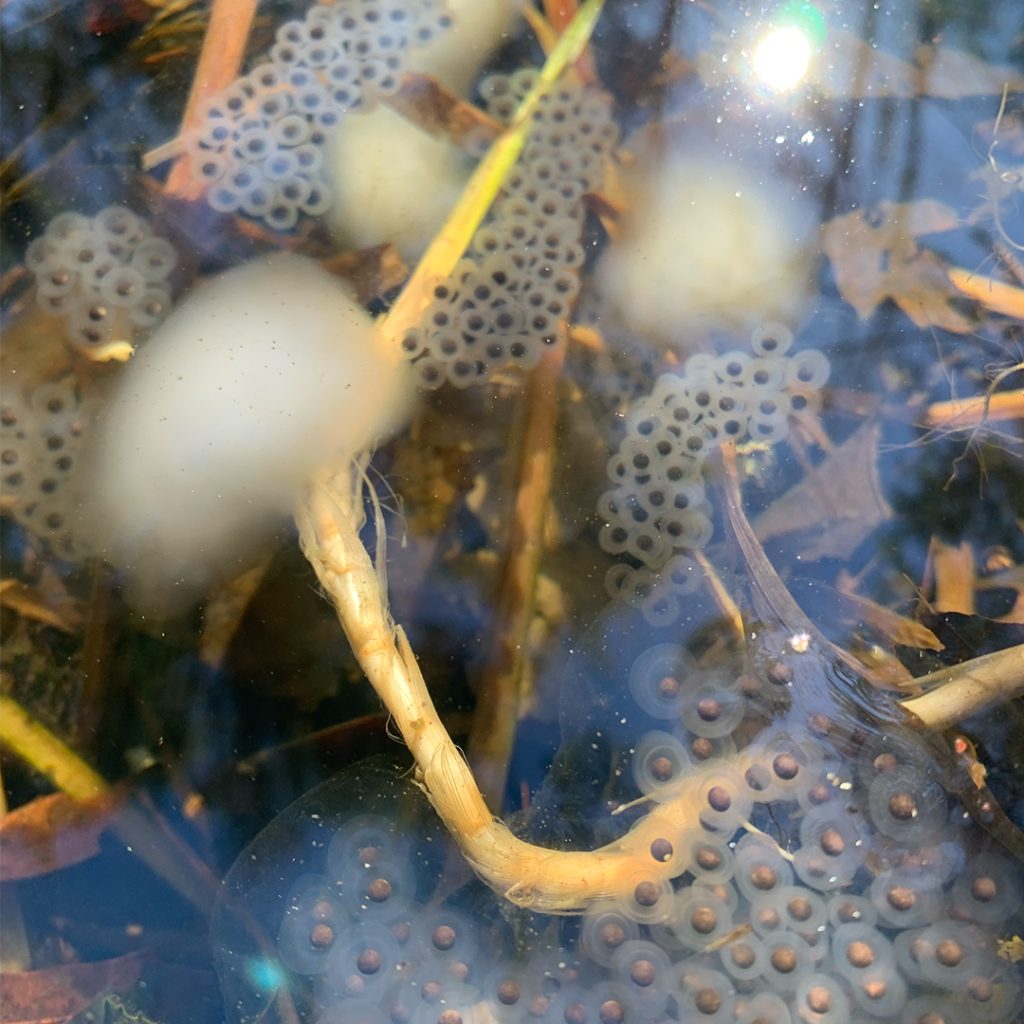
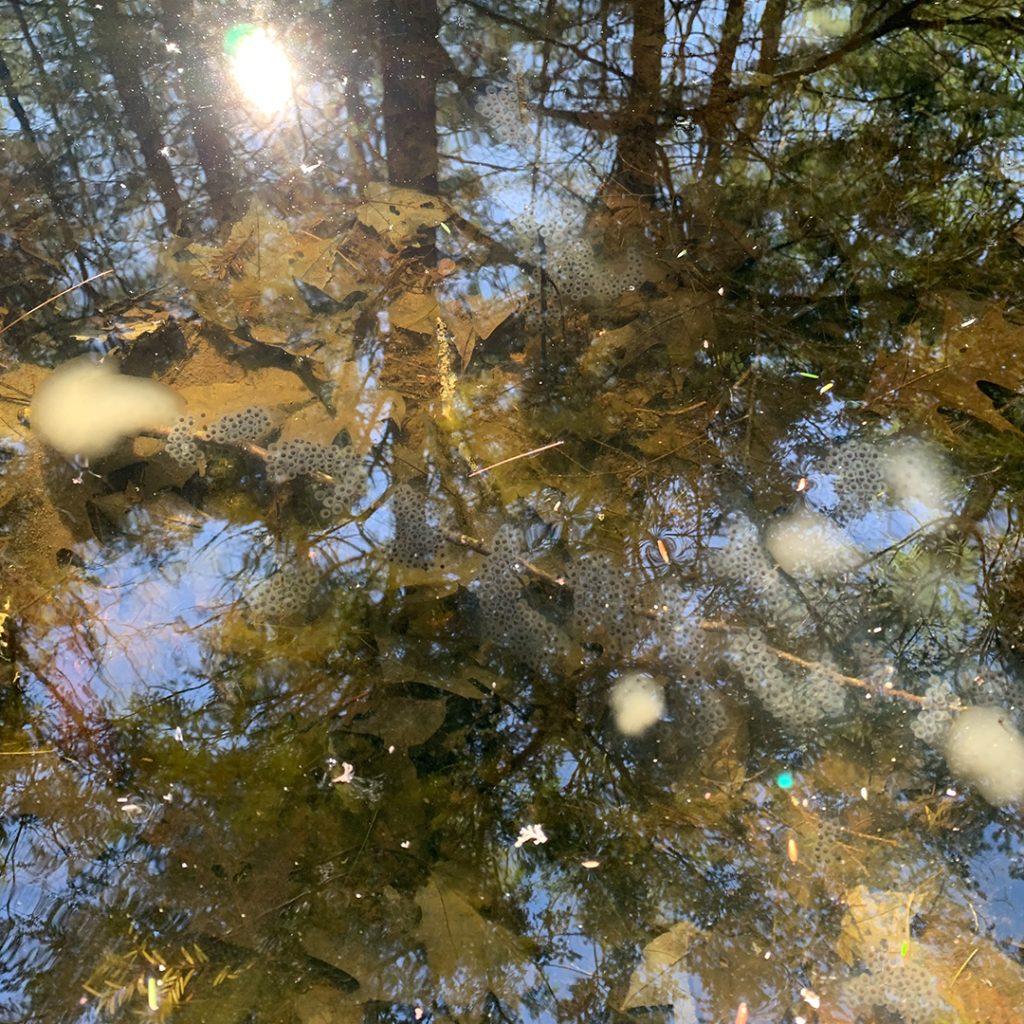
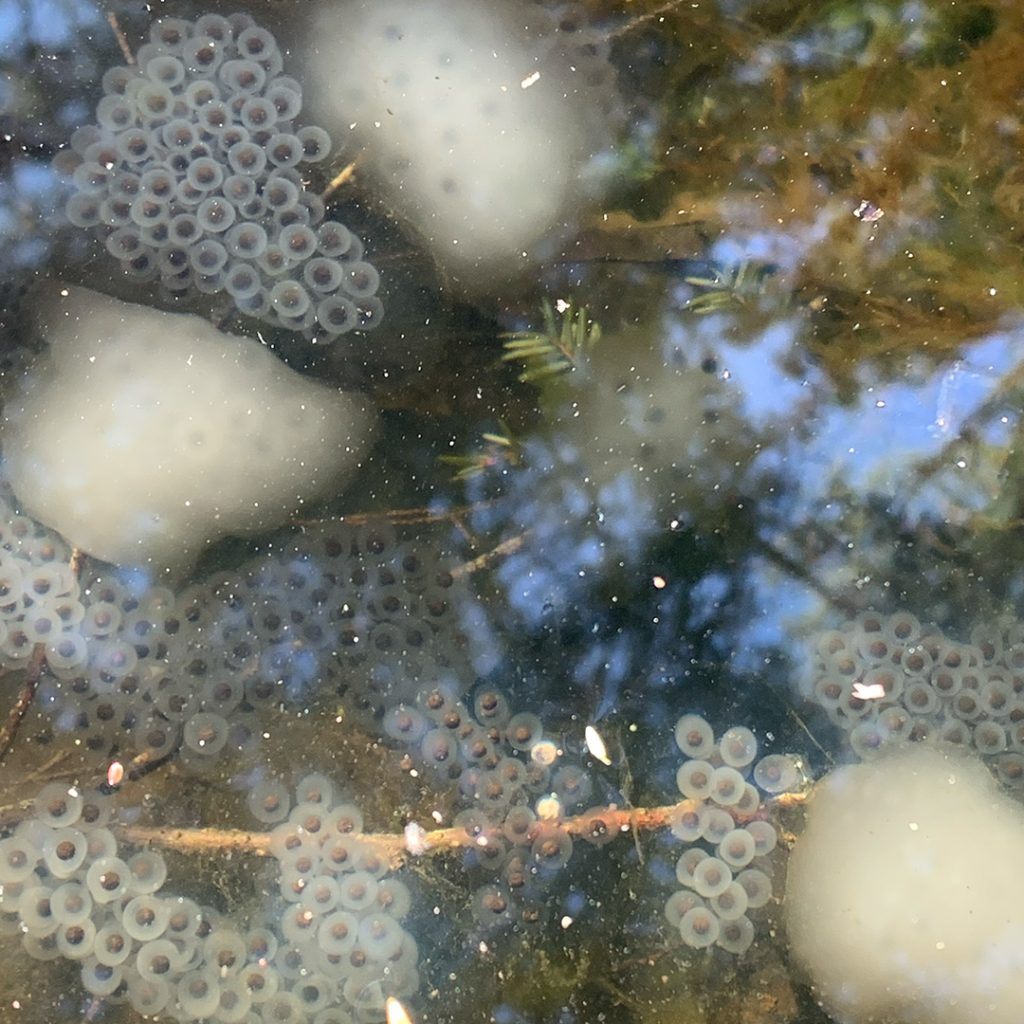
The next evening, by moonlight, my sister Sherry and I snuck across the farm field by moonlight with no flashlights to record the spring peepers singing. It was spine tingling. Listen:
4/21 – Ravenswood, Gloucester, MA. Among the silver beech trees, My sweetheart, Greg, and I hiked in to where mossy boulders ring the big round old quarry pools. Posted signs tell hikers to keep their dogs leashed to protect the spotted salamander eggs from being disturbed. These vernal pools are big and wide open, still and clear.
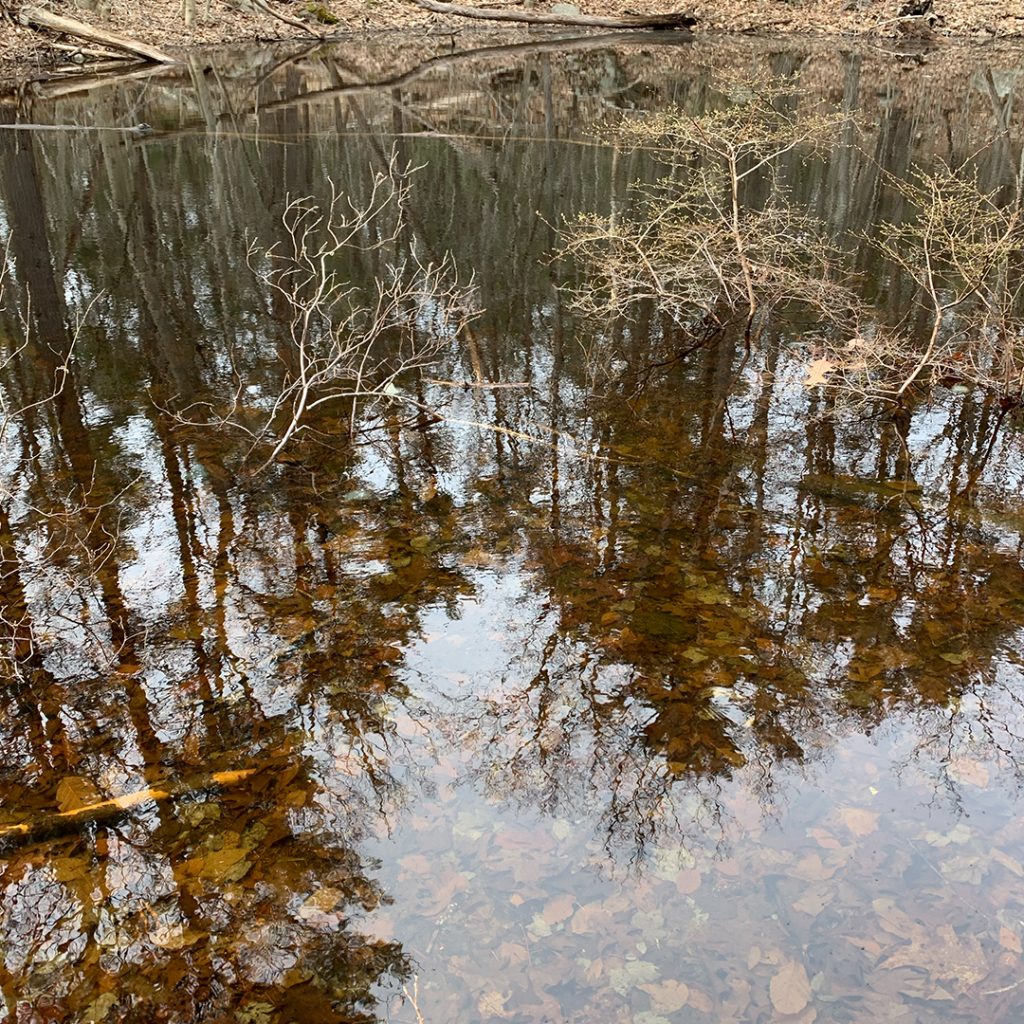
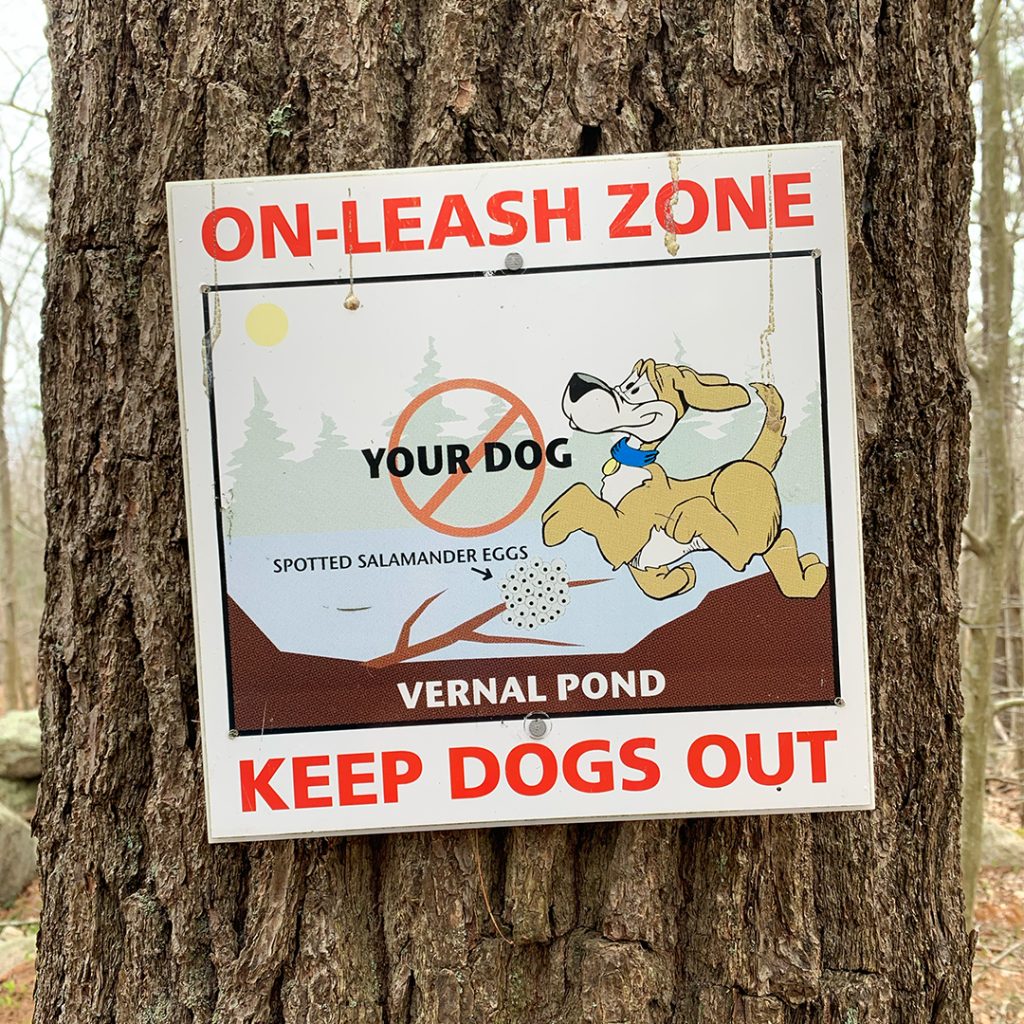
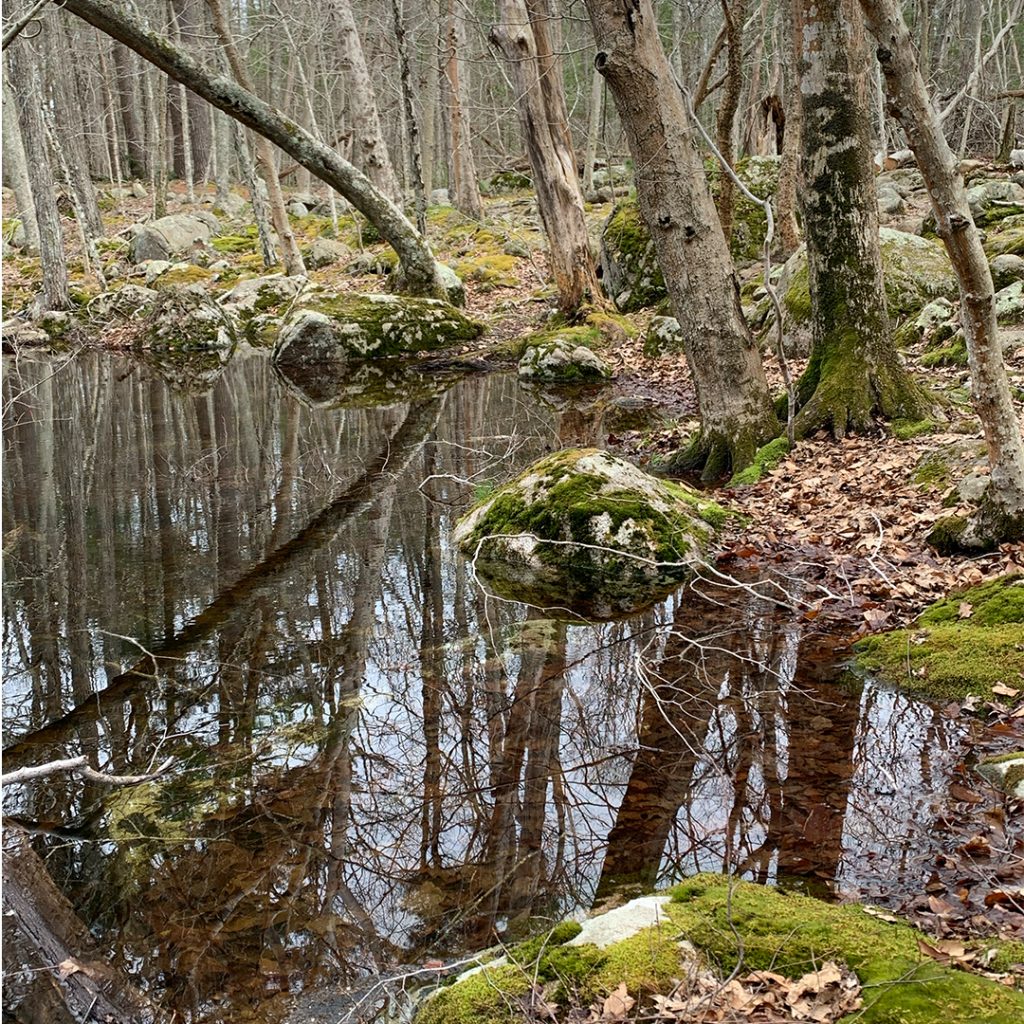
Bluish-white jello clumps of spotted salamander eggs were visible, attached to the shrubs growing far enough from shore to be out of reach of raccoons and opossums. We followed the margin of the pond around, and came across a clump of eggs lying right on the edge. The developing larvae were clearly visible through the gel, and no longer round eggs, but phase #26 or 28, shaped like little tiny chocolate earless bunnies. We could even see the algae that lives inside the eggs, supplying them with oxygen and food. Tiny insects were crawling all over the outside.
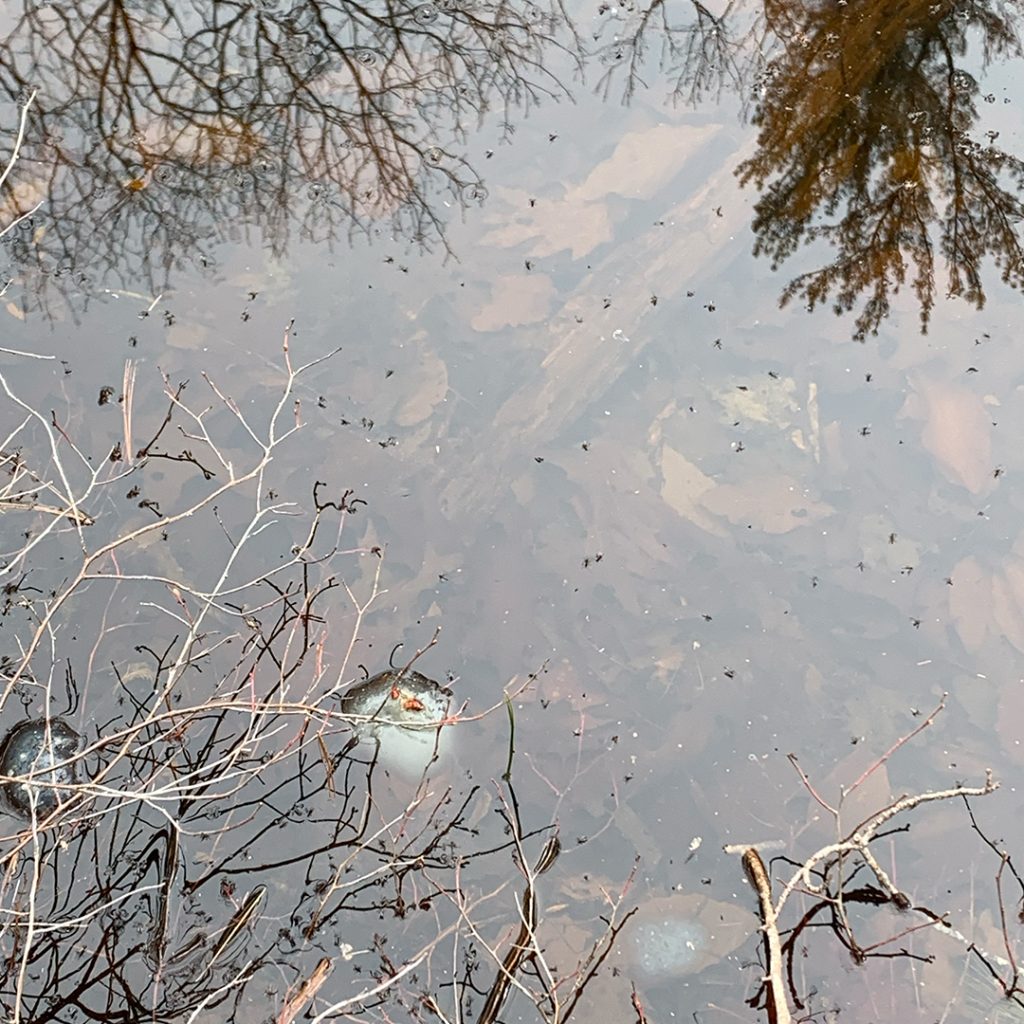
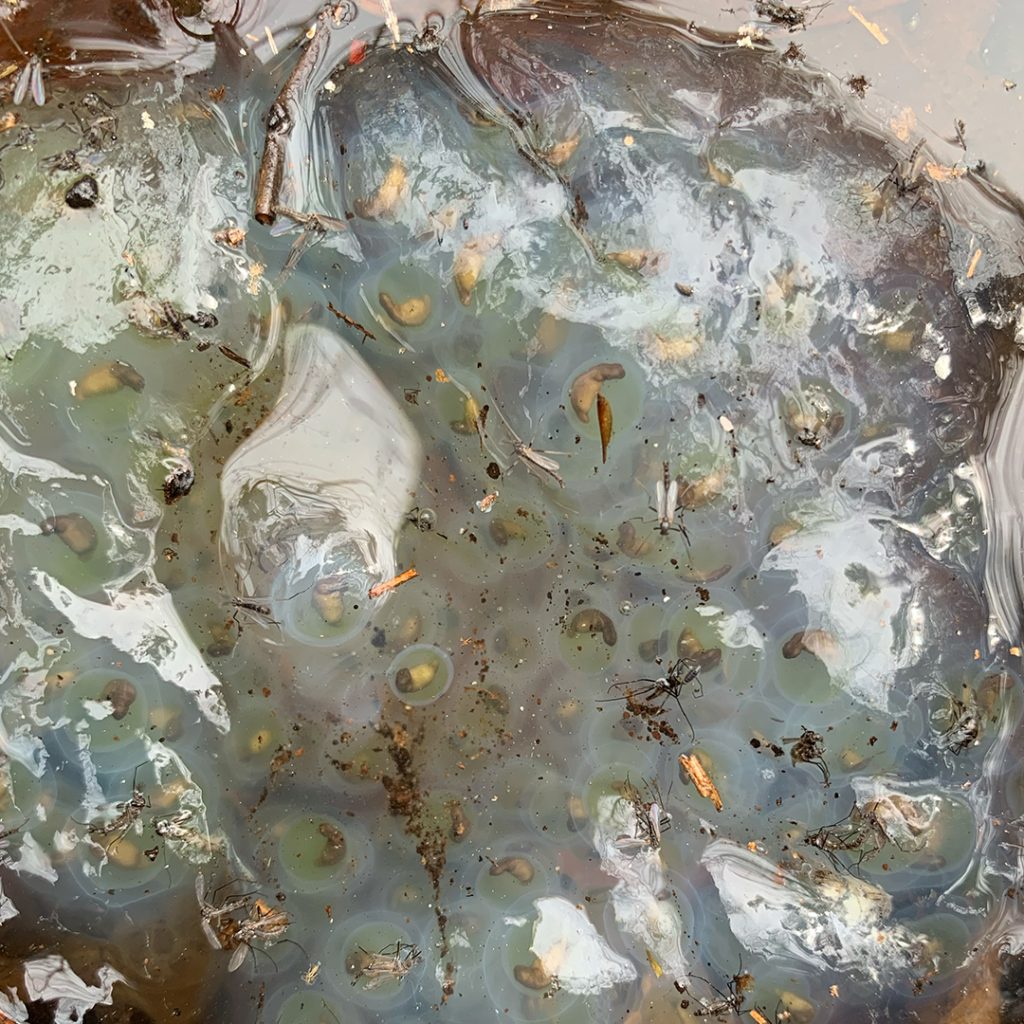
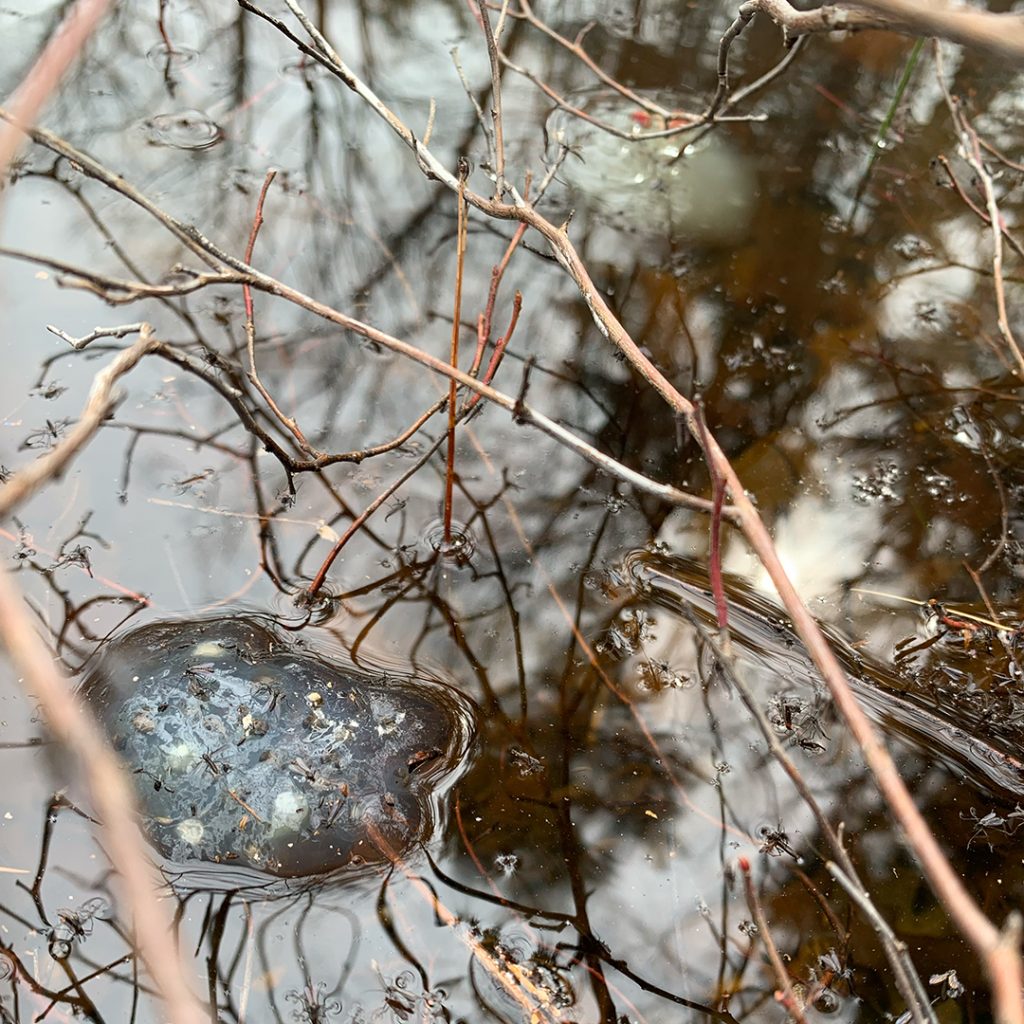
We went back to visit them a week later to see if they were hatching yet:



4/22- The Middlesex Fells, Medford, MA. Last summer, I walked the cracked-dried-mud bed of this pond near the Panther Cave. This spring, would this pool is seasonally ephemeral enough to be important amphibian habitat, after a wet early spring? My son and I made our way around the edge and wow! Among tiny forests of submerged moss, we saw pearly spirals of jelly noddles with black and white polka dots: toad eggs! And then around and between them, many more clear ribbons of jelly, with more developed eggs, laid maybe a week or two earlier. Like the spotted salamanders at Ravenswood, they were at around growth stage # 26-30, a blunt head shape, a rounded tail end.
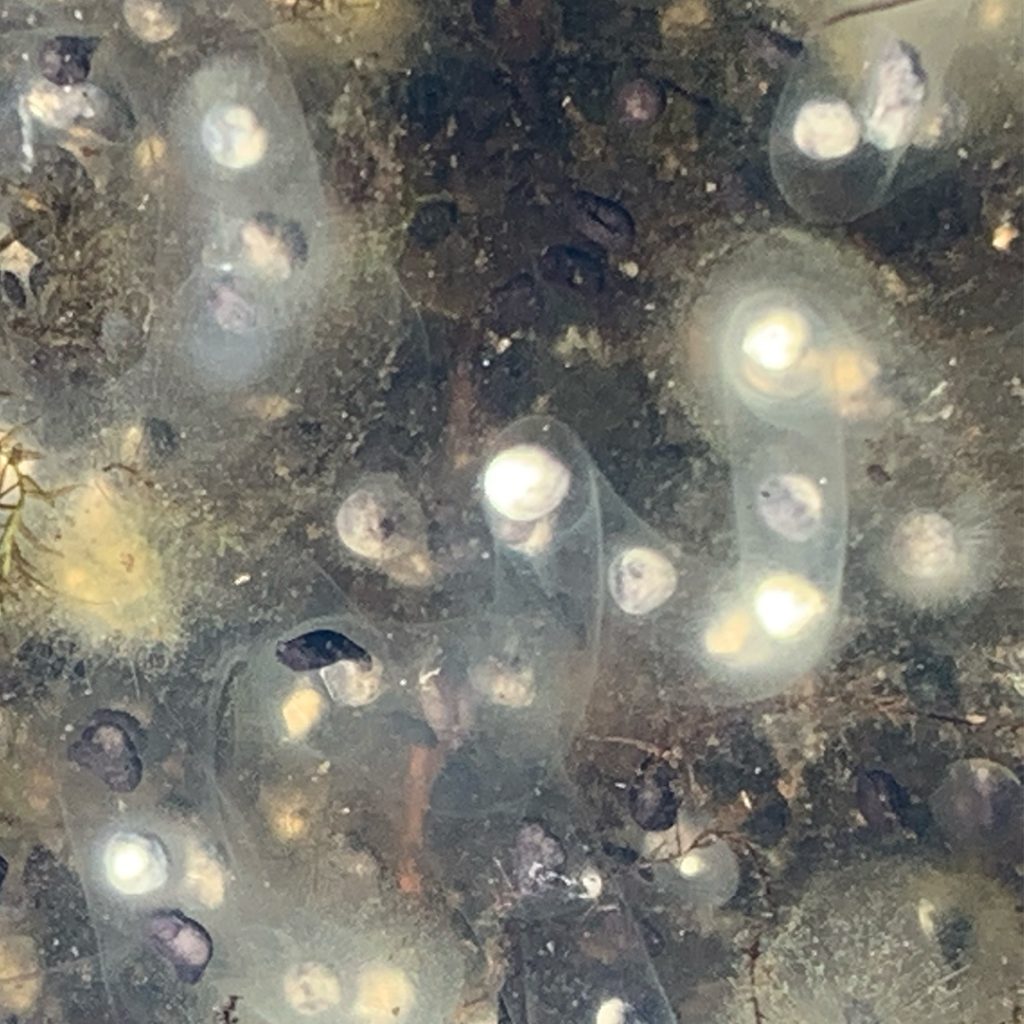
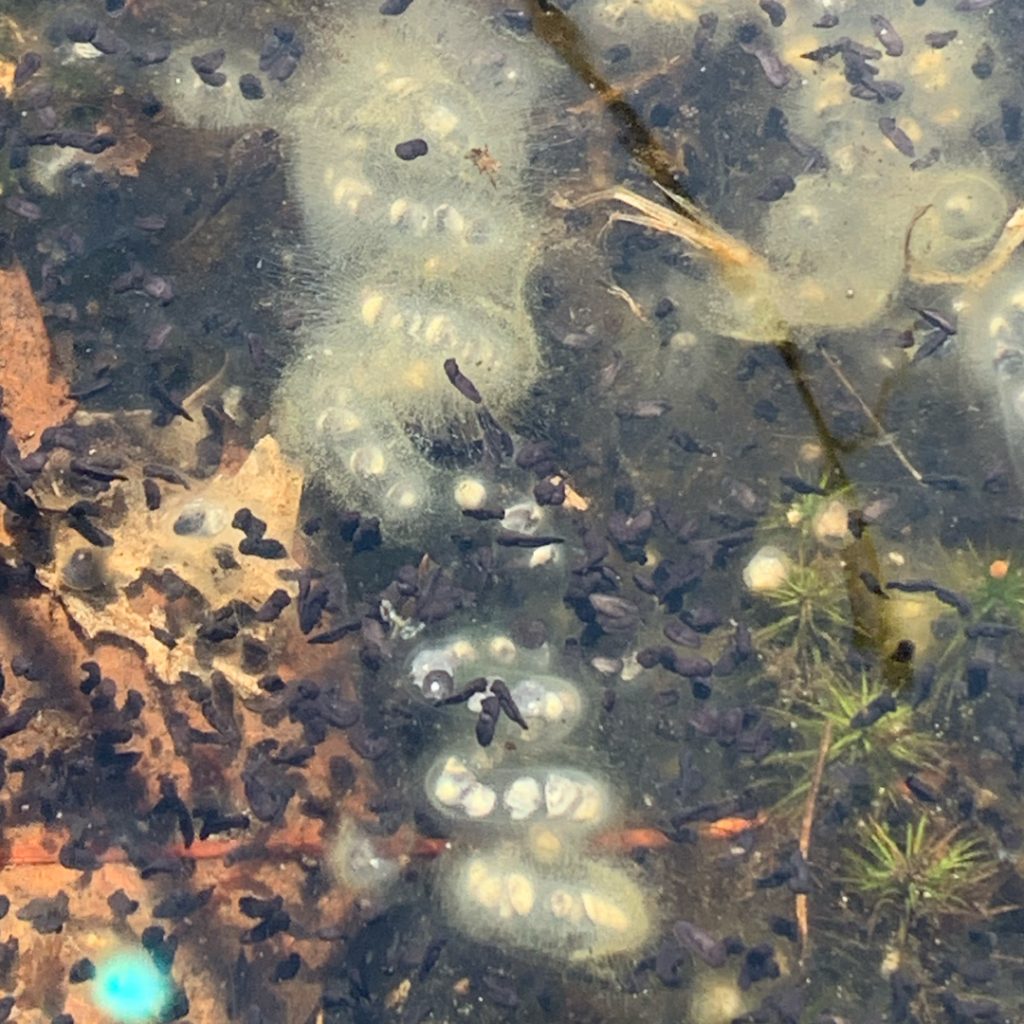
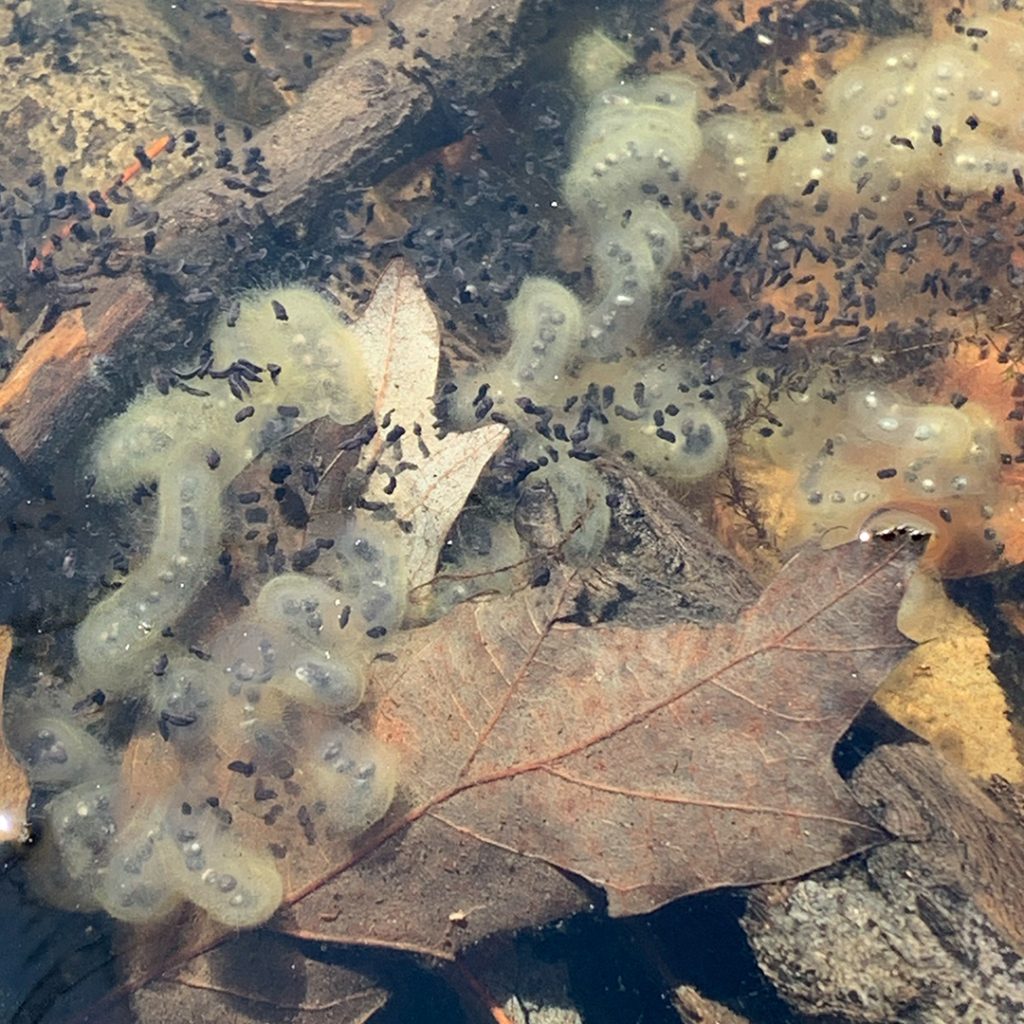
On the way out of the woods, our leaf-crunching feet startled snakes who had been basking in the warm April sunshine. One jumped into the water to swim away from us.
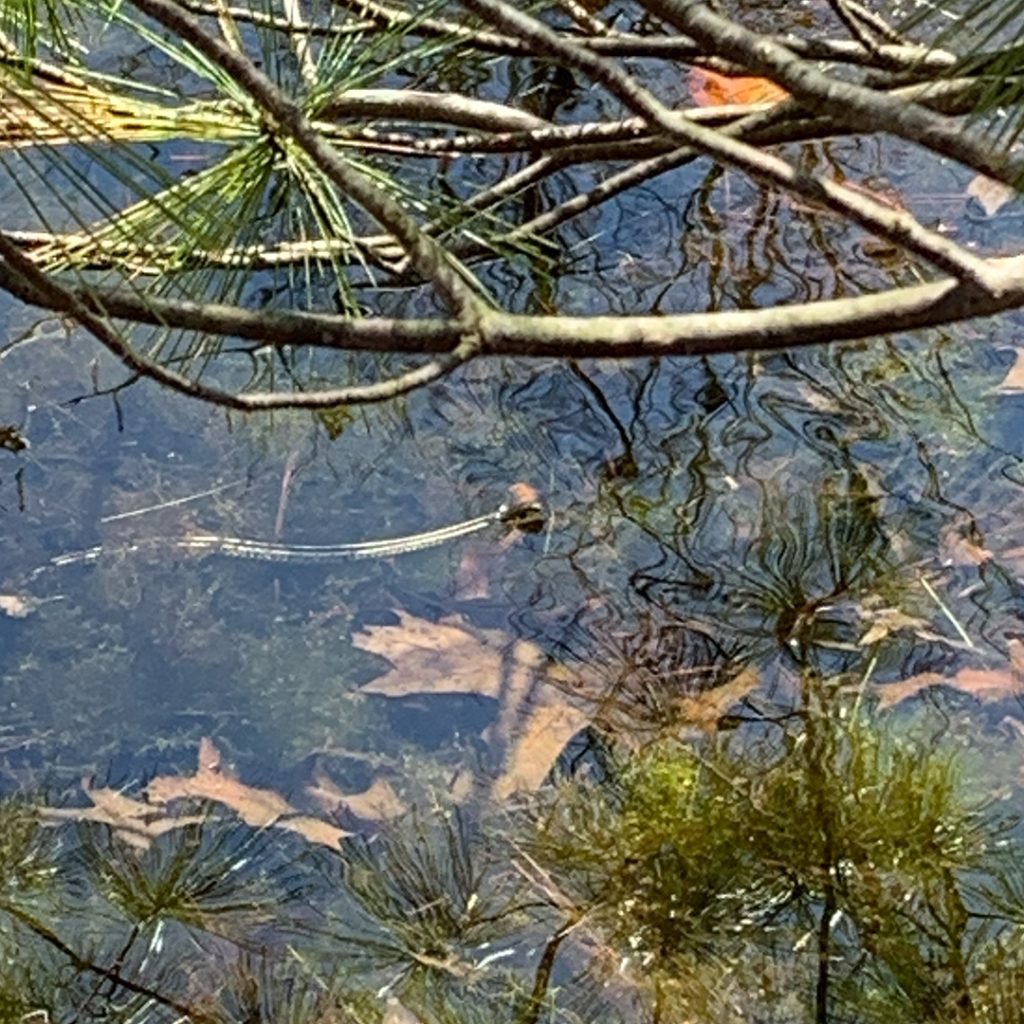
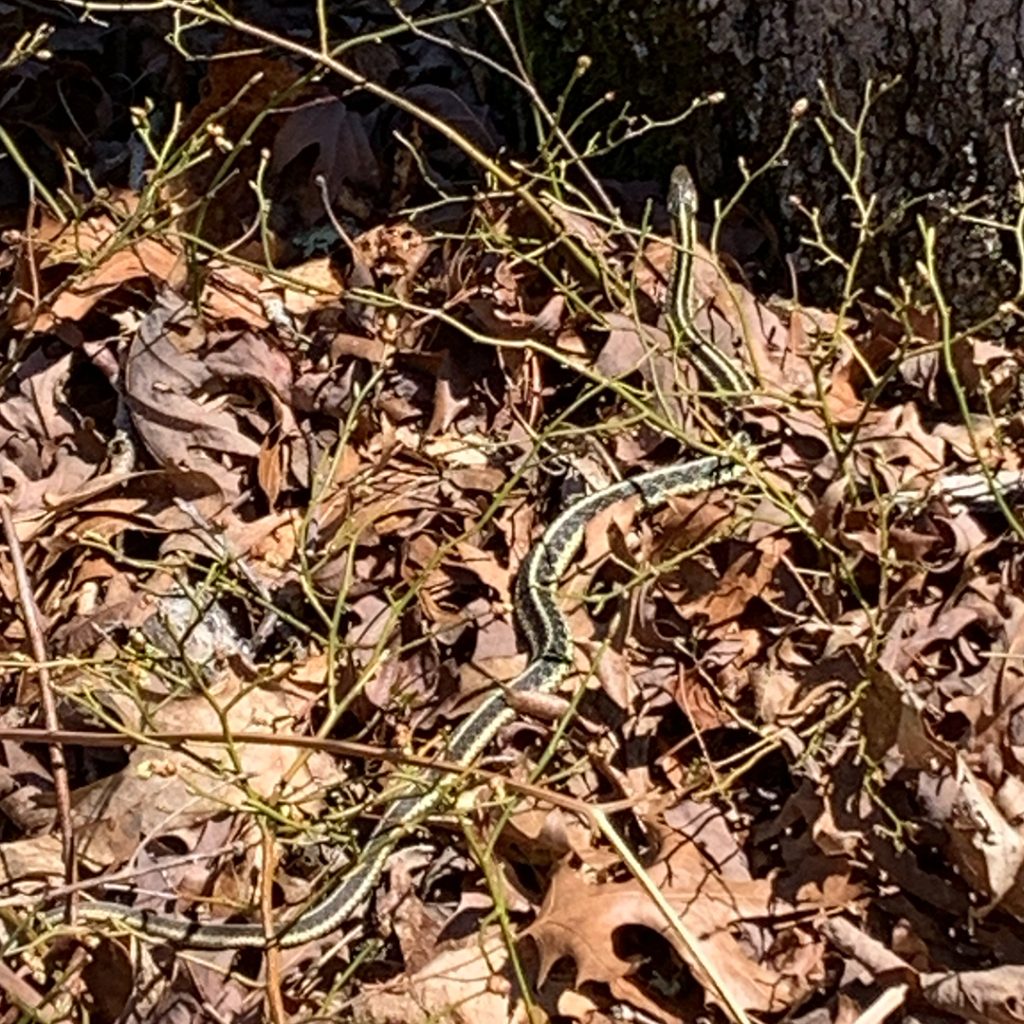

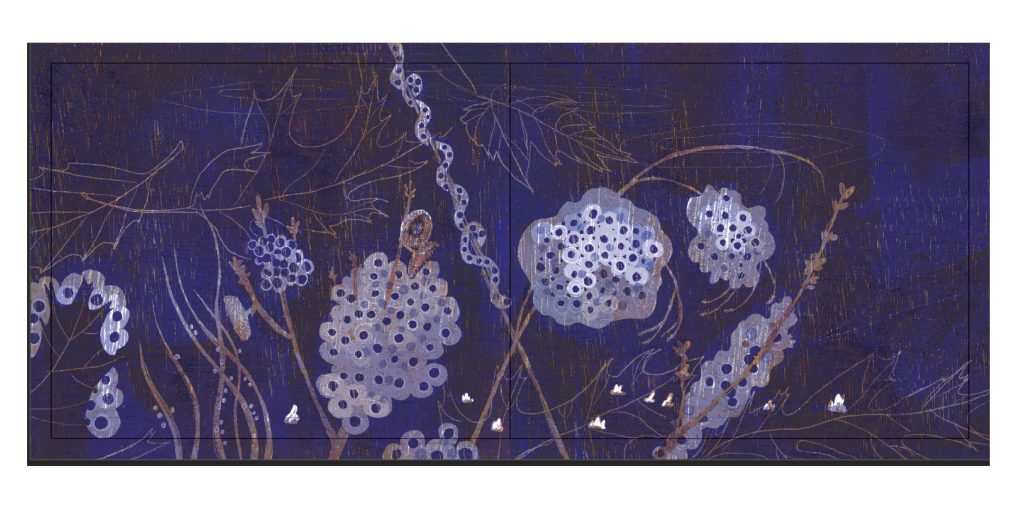
I have never seen so many amphibian eggs in one spring, one week of spring, before. I think I was tuned in to finding them from all the research and looking I did for drawing amphibian eggs for my upcoming book, SAFE CROSSING, Chronicle Books, 2025. Next spring, I hope you will get to read it for yourself! Sign up for my news here, and you can be the first to know when the book goes on pre-order:
